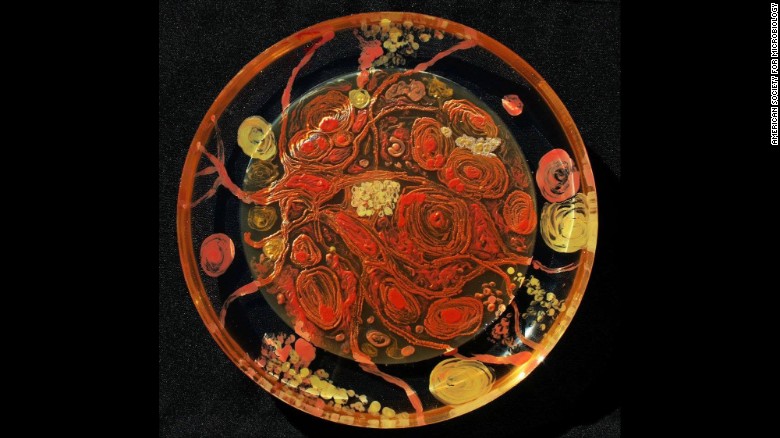Monday 02nd November 2015
We seem to have something of a fascination with unconventional media in the art world. Whether it's because we're driven by a conceptual desire for reimagining the way we see art or simply because we like to be unconventional for its own sake is up for debate, as many artists are rebels and rabble-rousers from day one (thankfully!). As it turns out, artists aren't the only ones with this drive.
The relationship between science and art has always been somewhat tense, with active proponents of both the differences and the similarities between the two, but recently scientists held a first of its kind art contest that around some curiosity throughout the art world. Dubbed somewhat unimaginatively the 'Agar Art Project', it featured projects that were entirely created with bacteria to create their forms.
The contest itself was named after the growth medium used to culture the bacteria. Agar is a clear, glutinous substance that provides all the nutrients that the bacteria need to grow. Petri dishes are filled with the stuff, and various bacterial cultures are introduced and allowed to grow and propagate. The control of exactly where they grow varies, but given the typical growth patterns of each species, it's possible to create some rather amazing imagery. To cap it all, the entire thing is then sealed in resin to preserve it from any kind of degradation.
"All the scientists that I work with, all agree that there is a sense of aesthetics in our work and how we present our work. It is difficult to do and appreciate without art," said Mehmet Berkmen of New England Biolabs, a research firm located in the United States. He should know, considering that his collaborative piece with artist Maria Penil entitled 'Neurons' won first prize in the competition as voted by a panel of judges, and another of their collaborative entries won the people's choice section of the contest by receiving the highest number of 'Likes' and shares on Facebook.
While they do a huge amount to popularize science, many in the art community were quick to point out that it wasn't really "art" in the high-brow, high-minded sense of the word, but rather some pretty images. Such arguments tend to come off as snobby and downright rude, but there is something to what they say. Yes, it's an interesting medium to work in, and yes it has some social value if it causes people to re-examine their perceptions of science, but at the end of the day its conceptual value (and some would say its aesthetic value) is somewhat thin.
Posted on November 02nd 2015 on 07:22pm
 We seem to have something of a fascination with unconventional media in the art world. Whether it's because we're driven by a conceptual desire for reimagining the way we see art or simply because we like to be unconventional for its own sake is up for debate, as many artists are rebels and rabble-rousers from day one (thankfully!). As it turns out, artists aren't the only ones with this drive.
We seem to have something of a fascination with unconventional media in the art world. Whether it's because we're driven by a conceptual desire for reimagining the way we see art or simply because we like to be unconventional for its own sake is up for debate, as many artists are rebels and rabble-rousers from day one (thankfully!). As it turns out, artists aren't the only ones with this drive.



